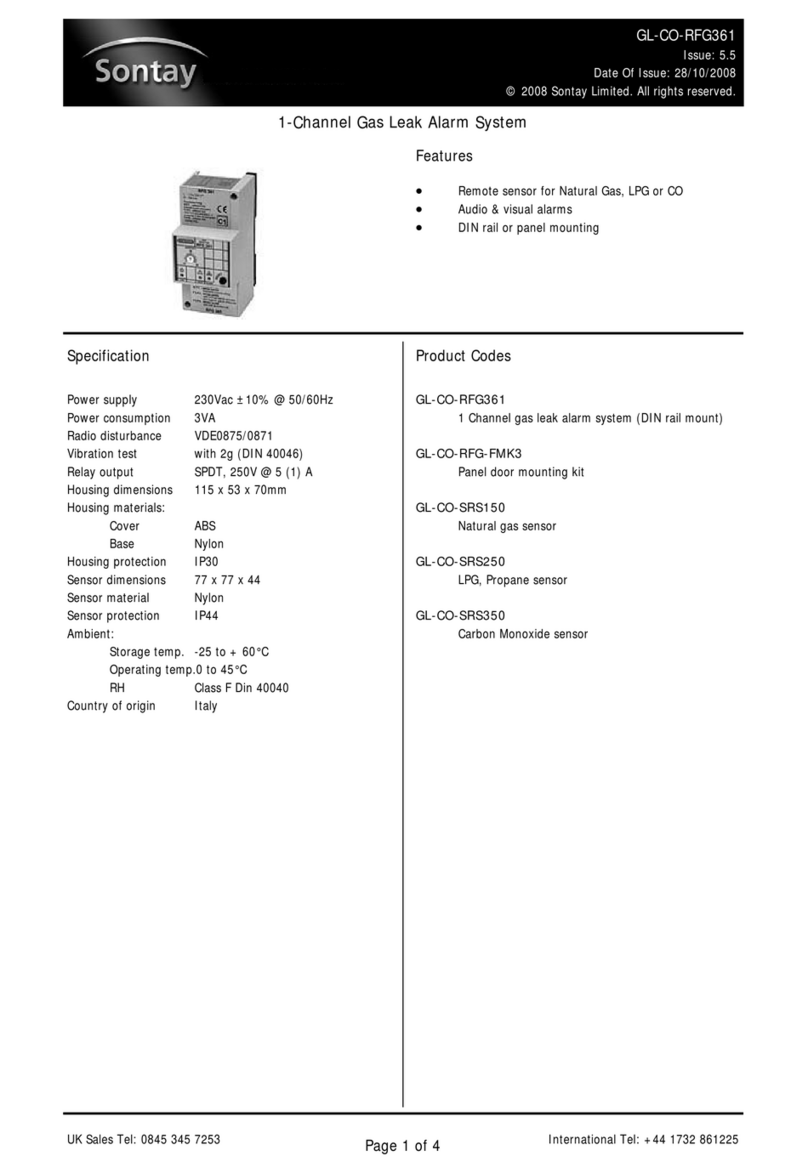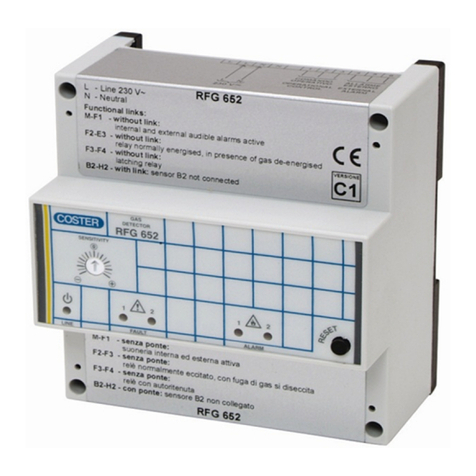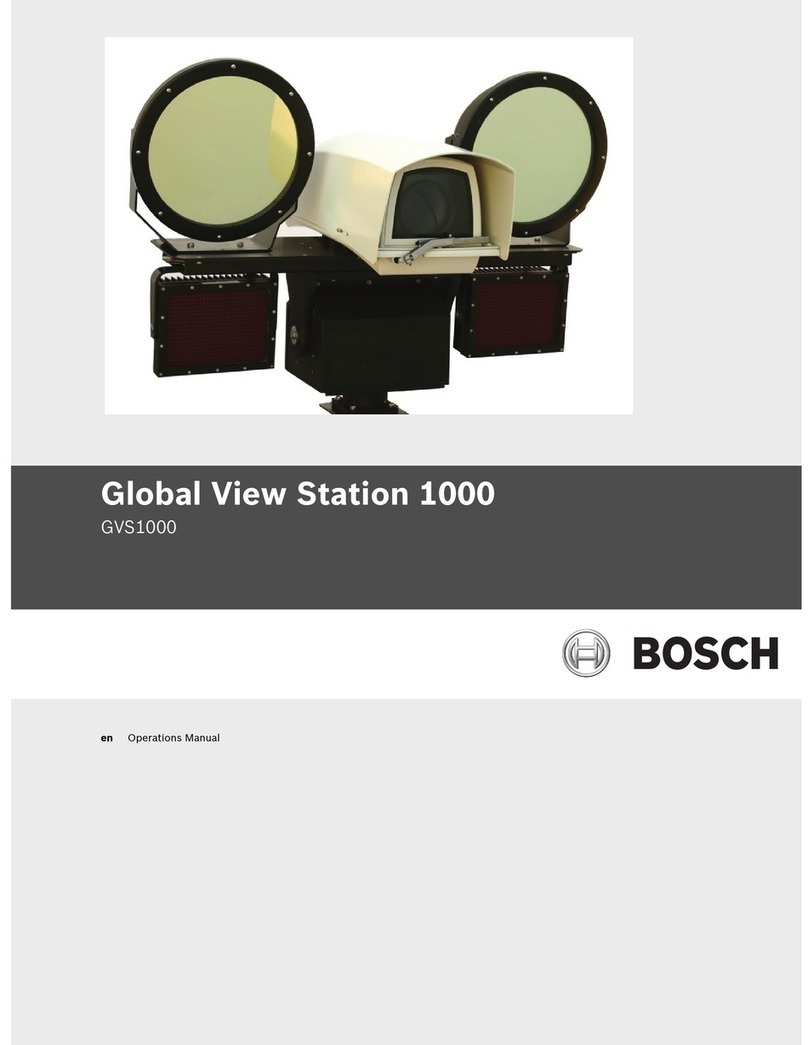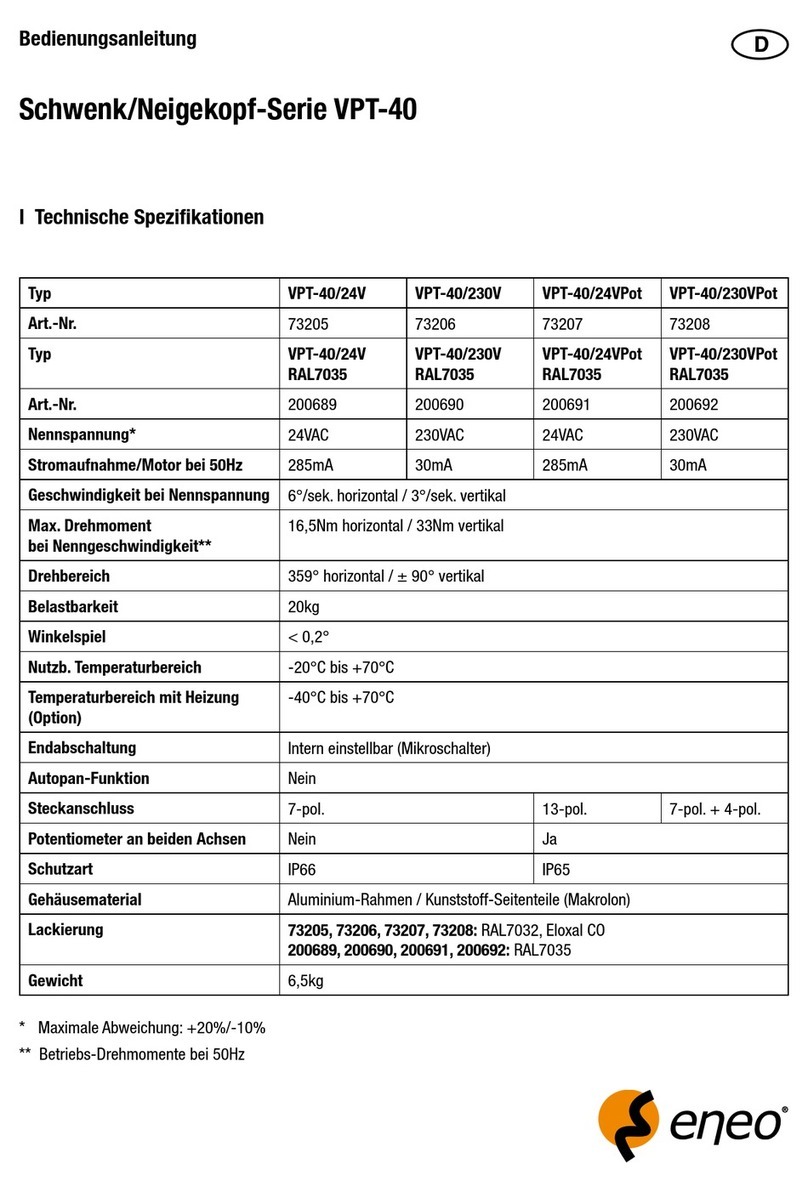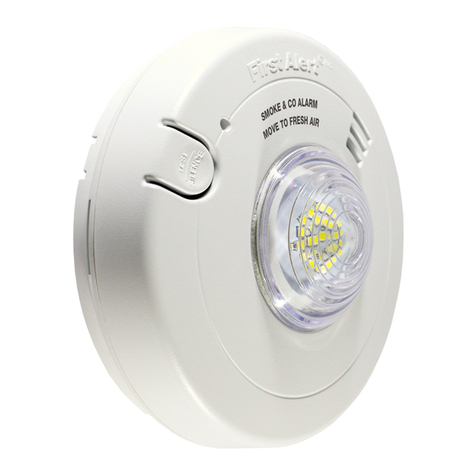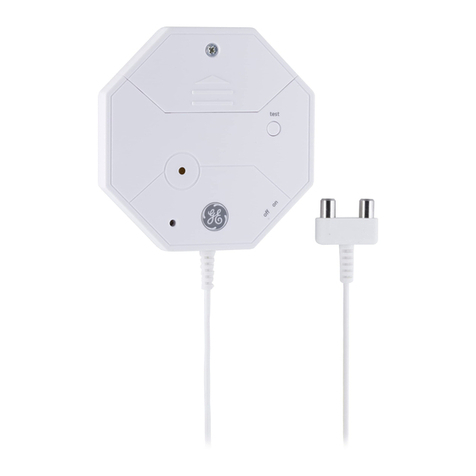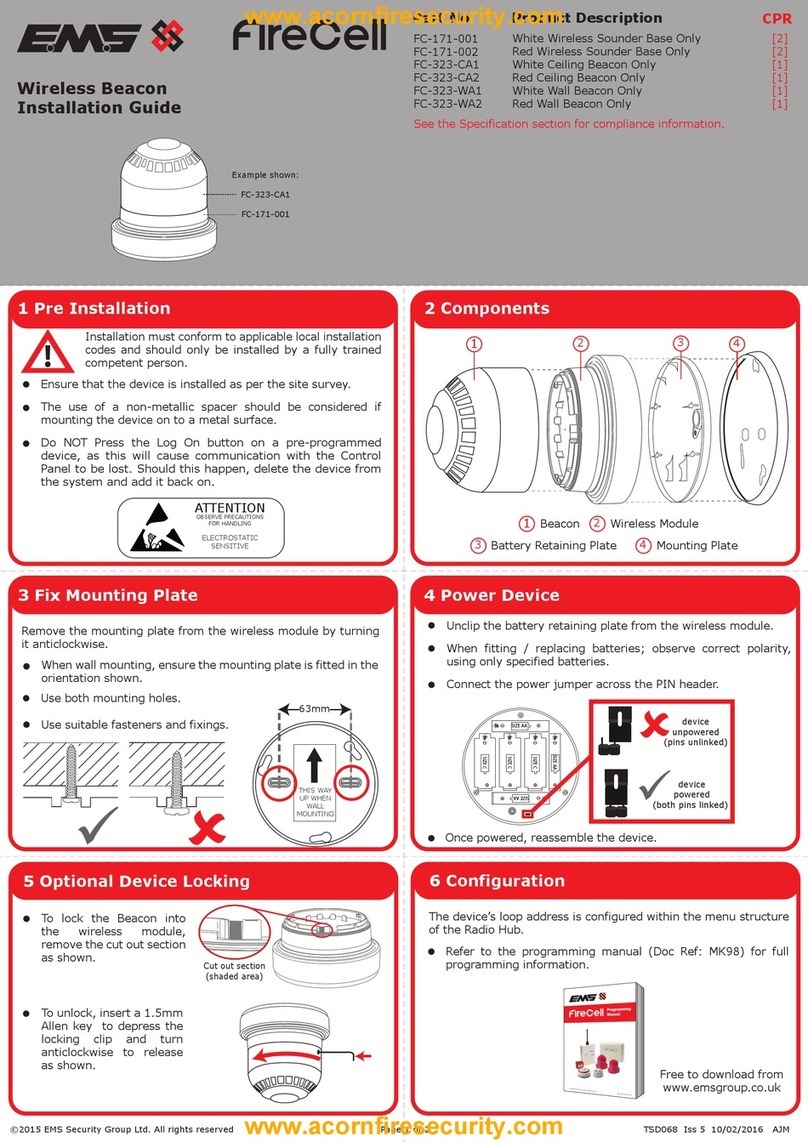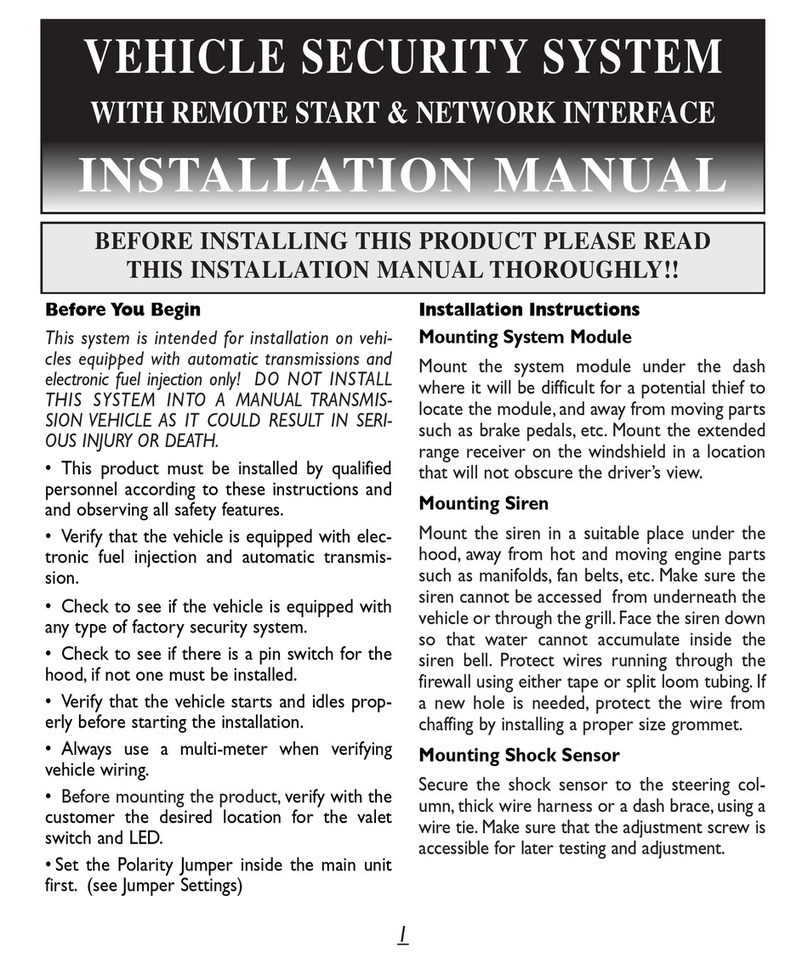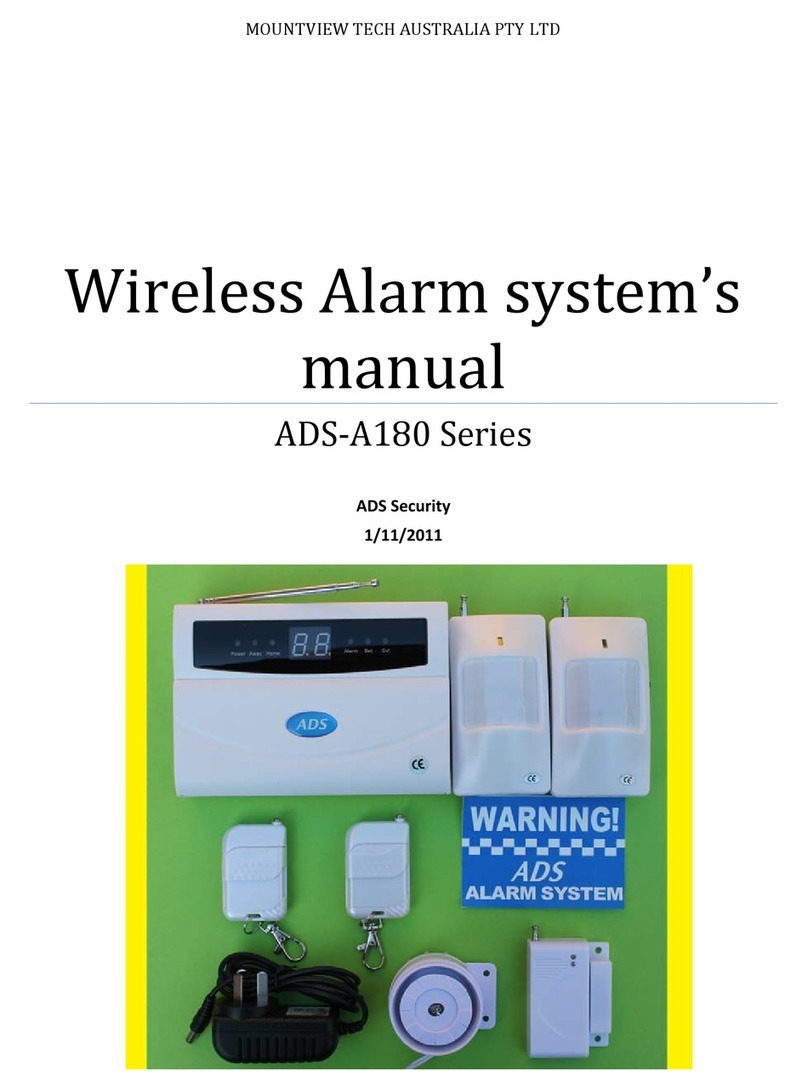Sontay GL-CO-RFG-361 User manual

© 2017 Sontay Limited. All rights reserved
Page 1 of 5
GL-CO-RFG-361
1-Channel Gas Leak Alarm System
Issue Number: 7.0
Date of Issue: 08/03/2017
Four Elms Road Edenbridge
Kent TN8 6AB UK
Features & Benefits
Remote sensors for natural gas, LPG and CO
1 x SPST relay outputs
DIN-rail as standard, panel mounting kit
available
Adjustable alarm thresholds
Self-diagnosis fault system
Audio & visual alarms
Technical Overview
The CL-CO-RFG361 is a single channel gas leak alarm system, that is designed for the detection of gas leaks in spaces such as boiler plant rooms,
workshops and other industrial gas installations, to provide safety alarm and shutdown facilities on detection of gas leakage.
Specification
Power supply 230Vac ±10% @ 50/60Hz
Power consumption 3VA
Radio disturbance VDE0875/0871
Vibration test with 2g (DIN 40046)
Relay output SPDT, 250V @ 5(1) A
Housing dimensions 115 x 53 x 70mm
Housing materials:
Cover ABS
Base Nylon
Housing protection IP30
Sensor dimensions 77 x 77 x 44
Sensor material Nylon
Sensor protection IP44
Ambient:
Storage temp. -25 to + 60°C
Operating temp. 0 to 45°C
RH Class F Din 40040
Country of origin Italy
The products referred to in this data sheet meet the requirements of
EU 2014/30/EU and 2014/35/EU
Product Codes
Controller
GL-CO-RFG-361
1 Channel gas leak alarm system (DIN rail mount)
Mounting option
GL-CO-FMK3
Panel mounting kit
Sensors
GL-CO-SRS-150
Natural gas sensor
GL-CO-SRS-250
LPG, Propane sensor
GL-CO-SR-S350
Carbon Monoxide sensor
WEEE Directive:
At the end of the products useful life please
dispose as per the local regulations.
Do not dispose of with normal household waste.
Do not burn.

© 2017 Sontay Limited. All rights reserved
Page 2 of 5
GL-CO-RFG-361
1-Channel Gas Leak Alarm System
Issue Number: 7.0
Date of Issue: 08/03/2017
Four Elms Road Edenbridge
Kent TN8 6AB UK
Siting of Devices
Detectors
These must be sited in a dry space which meets the relevant ambient requirements.
If installed in a location classified as “Hazardous” it must be installed in a cabinet for electrical equipment constructed according to the regulations
in force for the class of danger concerned.
The controller can be mounted on a DIN rail and housed in a standard DIN enclosure.
Sensors
The correct siting of the sensor is fundamental for the correct functioning of the system. The position depends on the type of gas to be monitored
and, in particular, on its density in respect of air:
Methane (gas lighter than air which therefore tends to rise).
Position: at a distance of 10 to 50cm from the ceiling and, in any event, above doors or windows.
Propane (LPG) (gas heavier than air and so tends to move downwards).
Position: at a distance of 10 to 50cm from the floor.
Carbon monoxide (CO) (gas with a density very similar to that of air and which therefore tends to diffuse uniformly)
Position: at a height of 150 to 200cm from floor.
Moreover, to ensure the correct operation of the detector and to avoid useless alarms due to a casual and momentary presence of gas, the sensor
must NOT be positioned:
Less than 1 to 2 metres from boilers or water heaters,
Less than 2 to 3 metres from kitchen ranges and ovens,
In spaces where air movement could be hindered (e.g. in corners or enclosed spaces),
Near to doors or windows,
Near to air extractors,
In places where dust or dirt could contaminate the sensor and so render it ineffective,
In places subject to possible sprays of water, particularly sensors positioned near the floor,
In places where the temperature or humidity could be outside the limits stated.
Solenoid shut-off valve
This must be installed on the gas distribution pipe, taking the following precautions::
If possible, in a different space from the one being controlled,
In an easily-accessible place, especially for the valves which have to be reset manually.
If installed outside, it must be protected against the weather,
In installations with external propane (LPG) gas tank, it must be installed downstream of the pressure-reducing valve (30 to 40 mbar).
Alarm Levels
Methane
Alarm methane 0.5…0.8…1.25 %
5,000…8,000…12,500 ppm
Pre-alarm methane 0.3...0.5...0.8 %
3,000...5,000...8,000 ppm
Propane-GPL
Alarm propane-LPG 0.22…0.35…0.56 %
2,200…3,500…5,600 ppm
Pre-alarm propane-LPG 0.14...0.22...0.35 %
1,400...2,200...3,500 ppm
Carbon monoxide (CO)
Warning: in detecting carbon monoxide (CO), the levels and
intervention times are processed and controlled by a
microprocessor. The “Sensitivity” control must be set in the “0”
position.
Carbon monoxide-CO alarm: "threshold + time"
< 50 ppm: no alarm
50...100 ppm: 60 minutes
100...300 ppm: 10 minutes
>300 ppm: immediate alarm
Carbon monoxide-CO pre-alarm:
Time between exceeding alarm threshold and alarm

© 2017 Sontay Limited. All rights reserved
Page 3 of 5
GL-CO-RFG-361
1-Channel Gas Leak Alarm System
Issue Number: 7.0
Date of Issue: 08/03/2017
Four Elms Road Edenbridge
Kent TN8 6AB UK
Installation
1. The GL-CO-RFG361 should only be installed by a competent, suitably trained technician, experienced in installation with hazardous
voltages. (>50Vac & <1000Vac or >75Vdc & 1500Vdc)
2. Ensure that all power is disconnected before carrying out any work on the GL-CO-RFG361. Maximum cable is 2.5mm², care must be
taken not to over tighten terminals.
3. Separate the base from the cover, if DIN rail mounting clip onto the DIN rail.
4. Make connections as required using the following cables:
1.5 mm2 cross-section for power and relay control outputs,
1 mm2 cross-section for sensors positioned up to a maximum distance of 50 meters; or
1.5 mm2 cross-section for sensors positioned up to a maximum distance of 75 meters.
5. NB It is advised that no more than 2 cables be inserted into a single terminal. Use external junction boxes if necessary.
6. Select the “link functions” to adapt the detector to the desired type of operational control.
Fascia & Wiring
Basic operation: Solenoid valve N/C:
Links
Warning, when changing link functions ensure all power is disconnected first.
Link Functions:
M - F1 F3 - F4
No link Internal buzzer enabled No link Relay with latching alarm
Linked Internal buzzer disabled Linked Relay with non-latching alarm
F2 - F3
No link Relay normally energised when no gas present
Linked Relay normally de-energised when no gas present
Latching alarm & reset:
F3 - F4 linked:
Alarm ceases when the gas concentration falls below the threshold level and the ALARM LED blinks slowly. Press the RESET button to clear the LED
status.
F3 - F4 unlinked:
Alarm continues even when the gas concentration falls below the threshold level. To deactivate press the RESET button for at least 5 seconds.
Operational
control
Power LED Fault Alarm Reset button
Sensitivity adjustment

© 2017 Sontay Limited. All rights reserved
Page 4 of 5
GL-CO-RFG-361
1-Channel Gas Leak Alarm System
Issue Number: 7.0
Date of Issue: 08/03/2017
Four Elms Road Edenbridge
Kent TN8 6AB UK
Operation
Switching on
When it is powered the GL-CO-RFG does not start detecting immediately and does not signal any alarm for the first two minutes of operation.
This is the time necessary for the gas-sensing elements to become stabilised so that their readout can be considered accurate and reliable. This
period for the stabilisation of the sensors is indicated, on the facia of the detector by the flashing of the FAULT and ALARM LEDs. At the end of the
stabilisation period the FAULT and ALARM LEDs, in normal situations, switch off.
Pre-alarm and alarm thresholds for methane and propane-LPG)
By means of the SENSITIVITY knob, the intervention threshold (sensitivity) can be increased or decreased according to the particular conditions of
the space in which the sensor is positioned, or for specific requirements:
Knob towards + = increase of sensitivity.
Knob towards - = decrease of sensitivity.
These adjustments, however, remain within the limits required by the regulations so it is always possible to intervene under conditions of the
maximum safety.
The intervention levels, referred to the LEL (Lower limit of Explosivity) = volumetric ratio in air of combustible gas or vapour below which an
explosive mixture is not formed) for the gases methane and propane LPG are as follows (the threshold values with the “SENSITIVITY” knob = 0 are
shown in bold type):
Pre-alarm and alarm threshold for carbon monoxide (CO)
The danger of carbon monoxide (CO) does not derive from its inflammability or the danger of explosion, but from its very high toxicity to the
human body. Moreover, its danger does not depend only on the concentration of the gas in air, but also on the length of time a person has
remained in an atmosphere in which this gas is present.
The pre-alarm and alarm levels of the sensor are determined by the processing of a microprocessor which takes into account the concentration of
the gas in the air and the exposure time. For this reason the “Sensitivity” knob on the detector must not influence the sensor readout and, even if
there is only one carbon monoxide (CO) sensor, it must be set in “0” position.
If the pre-alarm threshold is exceeded, this is indicated, on the detector facia, by the intermittent lighting of the ALARM LED for the sensor which
has detected the anomaly.
The intervention modes of the detector are accordingly as follows:
Concentration < 0.005% (50 ppm): the safety of the persons is guaranteed for an indefinite length of time and so the detector does not
intervene,
Concentration 0.005...0.01% (50...100 ppm): within this concentration range, for 60 minutes the detector signals a “Pre-alarm” situation
and after this period switches to “Alarm”.
Concentration 0.01...0.03% (100...300 ppm): within this concentration range, for 10 minutes the detector signals a “Pre-alarm” situation
and after this period switches to “Alarm”.
Concentration > 0.03% (300 ppm): the safety of the persons present in the space is not guaranteed.
The detector immediately switches to the “Alarm” state. The concentration values and times taken into consideration by the detector
have been established allowing a large safety margin to ensure there is no danger to the persons.
The action of the detector is of the “Dynamic” type: if the concentration passes from one level to another, the time calculated increases or
decreases as a consequence, thereby modifying the response of the detector. In particular, should the concentration of carbon monoxide (CO)
return below 0.005% (50 ppm) for more than one minute, the detector returns to the “Normal” condition, cancelling all the times counted up to
that moment and, if it has been programmed “Without latching” any “Alarm” condition will be terminated.
Type of Fault Fault LED Alarm LED
Sensor self-heating element broken ON OFF
No connection to terminalG ON OFF
No connection to terminal B ON OFF
No connection to terminal M OFF ON
ConnectionsG & Breversed ON OFF
ConnectionsG & M reversed OFF ON
ConnectionsB& M reversed OFF ON
Type of gas LIE Pre-Alarm Alarm threshold
Methane 5%
0.2..0.5..0.8% 0.5..0.8..1.25%
50000ppm
3000..5000..8000ppm 5000..8000..12500ppm
Propane (LPG) 2.10%
0.14..0.22..0.35% 0.22..0.35..1.25%
21000ppm
1400..2200..3500ppm 2200..3500..5600ppm

© 2017 Sontay Limited. All rights reserved
Page 5 of 5
GL-CO-RFG-361
1-Channel Gas Leak Alarm System
Issue Number: 7.0
Date of Issue: 08/03/2017
Four Elms Road Edenbridge
Kent TN8 6AB UK
Whilst every effort has been made to ensure the accuracy of this specification, Sontay cannot accept responsibility for damage, injury, loss or
expense from errors or omissions. In the interest of technical improvement, this specification may be altered without notice.
Commissioning
Power the device: LINE LED lights and FAULT LED and ALARM LED flash.
After 1.5…2 minutes the detector is enabled to acquire alarms and the LEDs FAULT and ALARM should go out.
Position the SENSITIVITY knob on "0".
Since the sensors are selective, and so not influenced by gases other than that for which they are dedicated, to simulate the presence of
gas it is necessary to use small gas cylinders containing specific gases at preset concentrations, releasing the gas as near as possible to
the detecting sensor. Only for sensors for detecting propane (LPG) can gas from a normal cigarette lighter be used.
When the gas concentration exceeds the pre-alarm threshold the ALARM LED flashes.
With a delay (about 20 seconds) after exceeding the alarm threshold:
oALARM LED lights and stays lit.
oThe internal alarm and the outside warnings (only if without jumper M-F1) are switched on.
oThe operational relay closes the gas shut-off valve or switches on the aeration fan.
Stop erogation of gas. When gas concentration on the sensor returns below the threshold level:
oIf detector is “without latching” (with jumper between F3-F4), alarm ceases and ALARM LED remains flashing slowly until
RESET button is pushed
oIf detector is “with latching” (without jumper between F3-F4), alarm remains until RESET button is pressed for at least 5
seconds.
If the detector controls a valve with manual reset, it is necessary to re-open manually also the valve.
Table of contents
Other Sontay Security System manuals
Popular Security System manuals by other brands
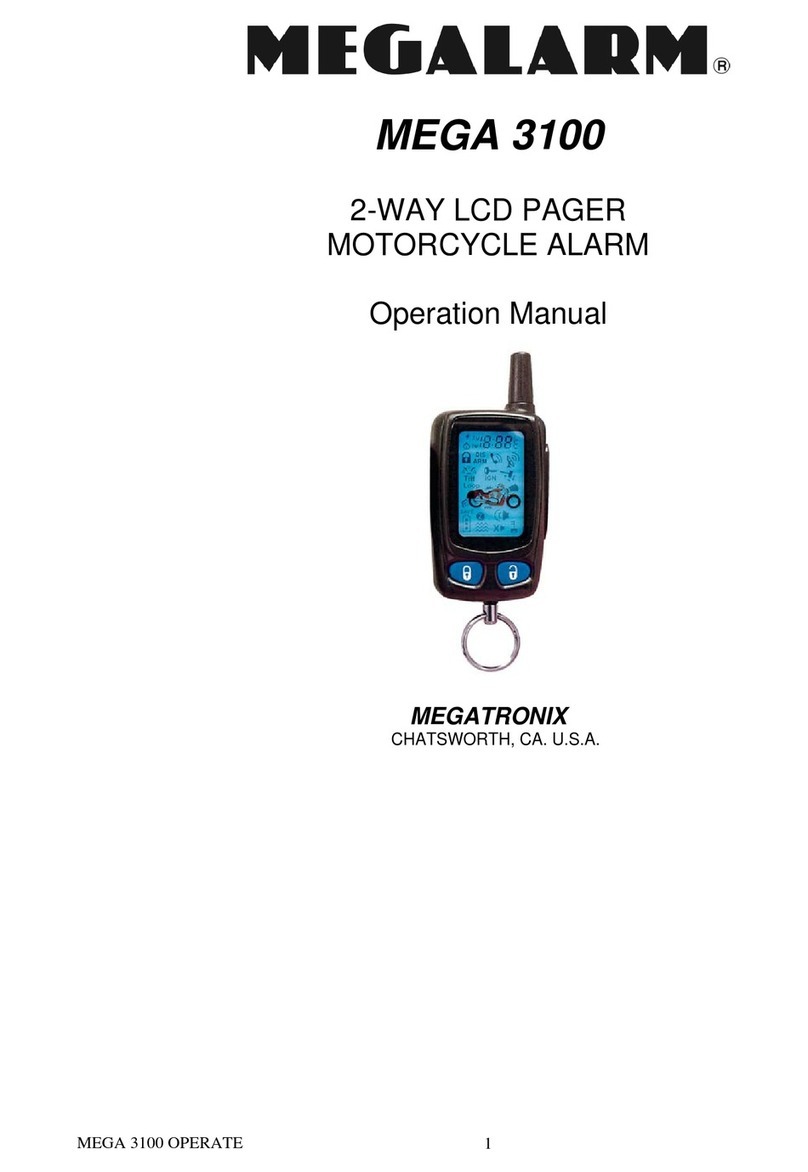
Megalarm
Megalarm MEGA 3100 Operation manual
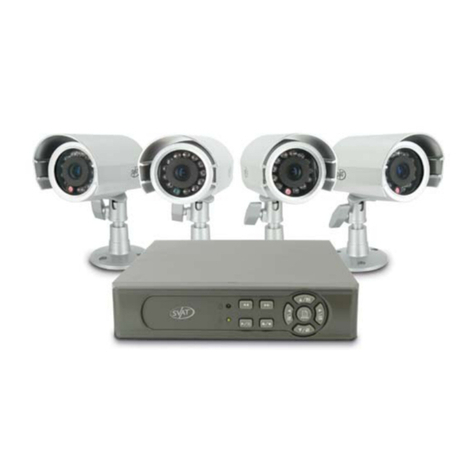
SVAT
SVAT Do-It-Yourself Compact DVR Security System... instruction manual

Honeywell
Honeywell ADEMCO VISTA-10P Installation and setup guide

Defender
Defender Cooper Torch quick start guide
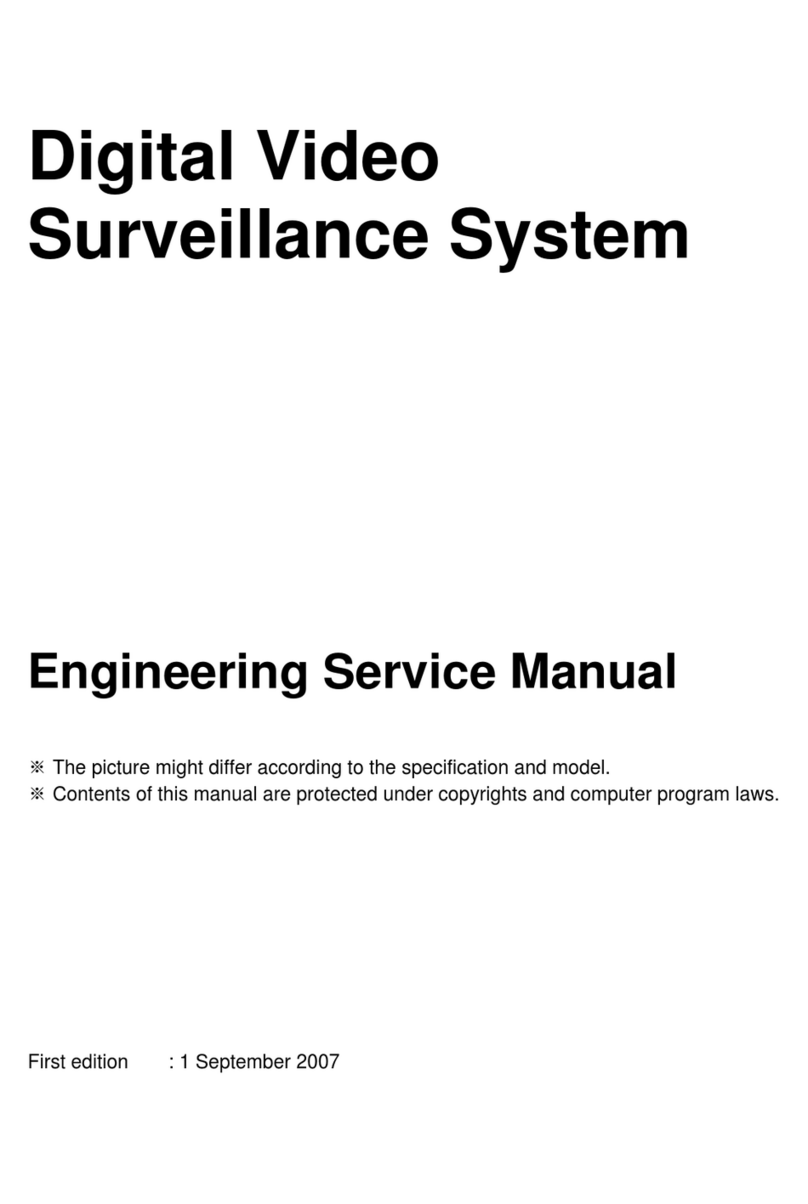
DiSS
DiSS KE-8000MX Service manual
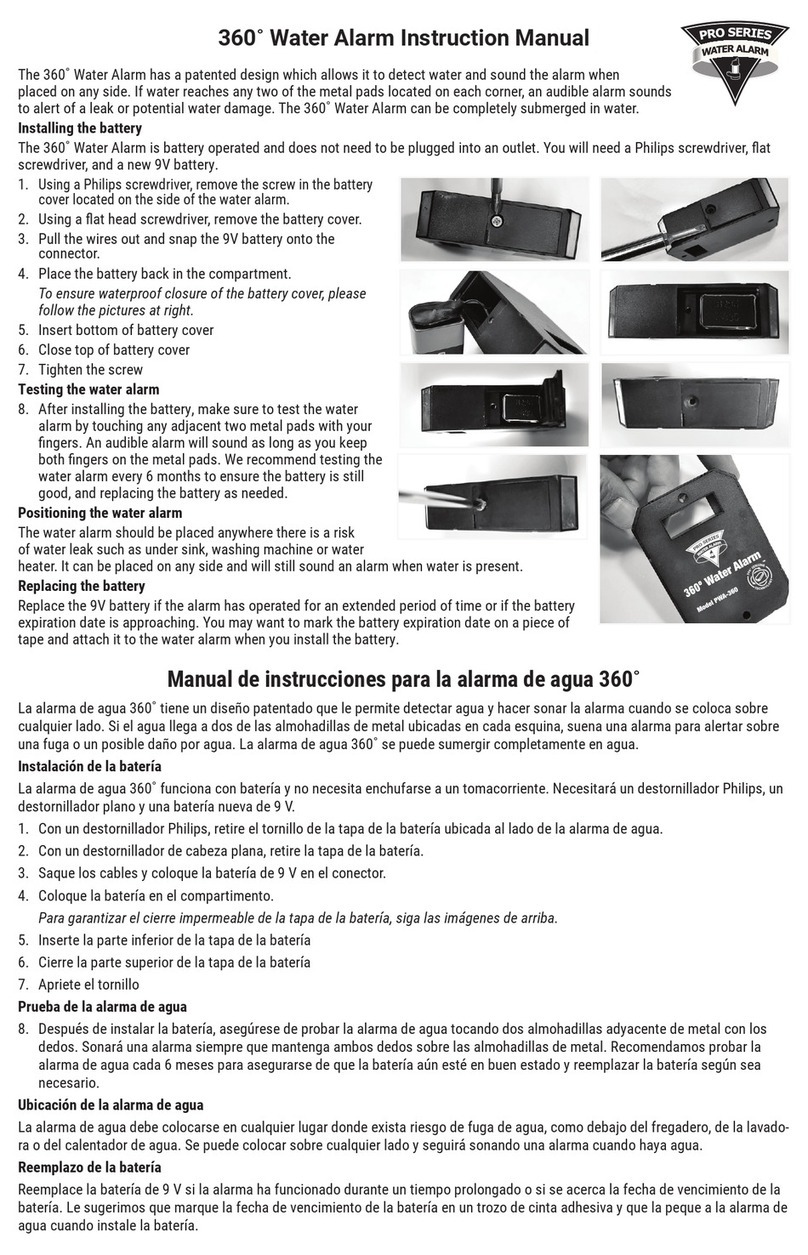
Glentronics
Glentronics PRO Series instruction manual
